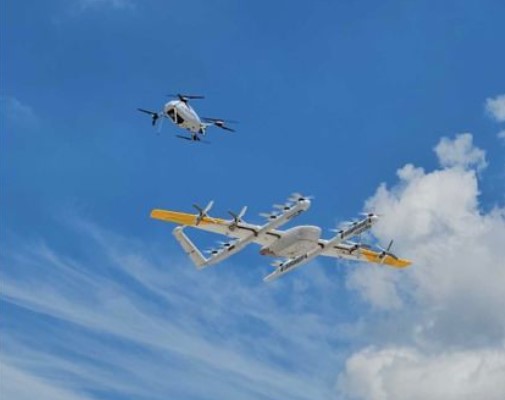By Philip Butterworth-Hayes
UAS traffic management (UTM) development has taken a major step forward with operational delivery drones now being able to share the same airspace.
Wing and Manna delivery drones have begun to operate together within the AllianceTexas Innovation Zone in Dallas, Texas, USA, using ASTM standards to strategically deconflict live flights in a commercial environment, with these first operations being witnessed by the Federal Aviation Administration (FAA) and the National Aeronautics and Space Administration (NASA)..
According to a Linkedin post from Joseph Rios, Chief Technologist, Aviation Systems Division at NASA Ames Research Center: “The system is designed such that a company can build this strategic conflict detection service for its own use, like Wing does. Or an organization can partner with a service supplier, like Manna does with ANRA Technologies….Multiple service suppliers have a shared governance agreement to ensure interoperability and common understanding of requirements and responsibilities. I’m catching a case of the vapors!!!”
“In just a small handful of years, this will be commonplace – there will be hundreds of millions of instances each year where drone delivery aircraft will safely pass each other in the airspace to deliver food, medicines and other essential items to households,” said Manna Drone Delivery’s Bobby Healy, in another Linkedin post. “Proud to take this first step with our UTM provider ANRA Technologies and with Wing.”
And according to a Linkedin post from ANRA:
“Manna and Wing utilized an international UTM standard from ASTM International to exchange data about their intended flights, ensuring their plans didn’t intersect and maintained necessary safety buffers. This achievement underscores the power of collaboration and technological innovation in advancing drone operations.”
The operation is part of the FAA’s “Normalizing Unmanned Aircraft Systems Beyond Visual Line of Sight Operations”, launched in late 2023.
“This action would normalize certain low altitude unmanned aircraft systems (UAS) operations, while ensuring the safety and efficiency of the United States airspace,” says the FAA’s strategy. “It is the next step in integrating UAS into the national airspace system (NAS), providing for significant safety, societal, and economic advantages and benefits. This action is expected to dramatically expedite the introduction of beyond visual line of sight (BVLOS) UAS operations in the NAS….. It would create new operational and design requirements for unmanned aircraft issued a SAC, enabling routine beyond visual line of sight (BVLOS) operations without waivers or exemptions. The rulemaking would prescribe a new BVLOS rating for the remote pilot certificate. It would also build new operating rules for UAS cargo delivery for compensation or hire under the new part. Finally, this action would create a defined regulatory approval pathway for third-party services, to include UAS Traffic Management (UTM) service suppliers.”
For more information
htttps://www.linkedin.com/feed/update/urn:li:activity:7214030121895124992/
https://www.linkedin.com/feed/update/urn:li:activity:7214062939828277248/
https://www.linkedin.com/feed/update/urn:li:activity:7214294500582588417/
https://www.reginfo.gov/public/do/eAgendaViewRule?pubId=202310&RIN=2120-AL82
(Image: Manna Drone Delivery)




